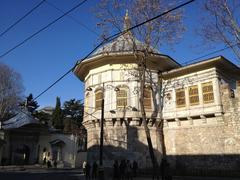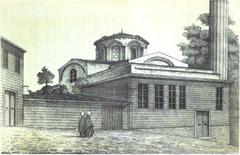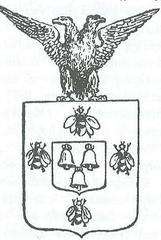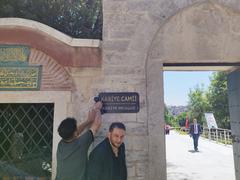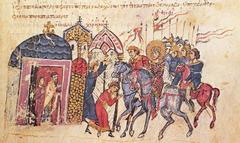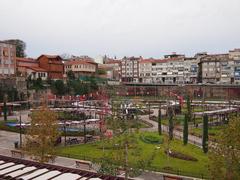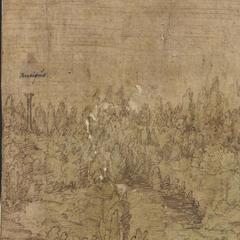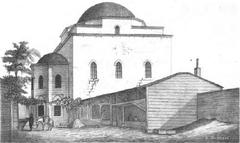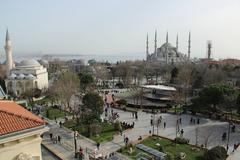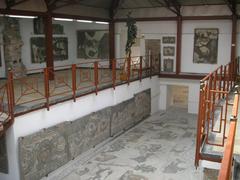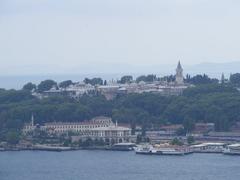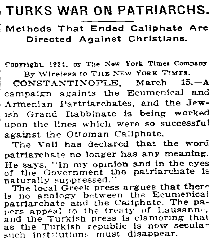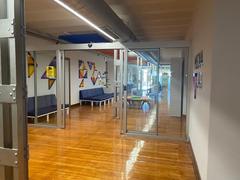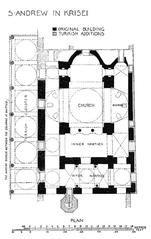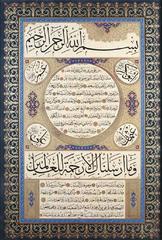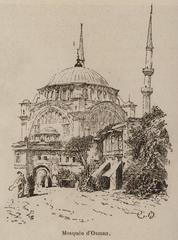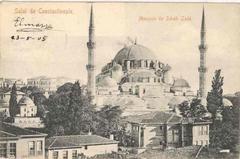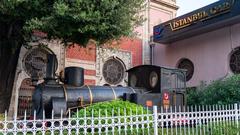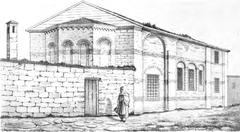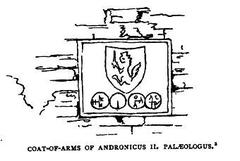Church of St. George of Samatya: Visiting Hours, Tickets, and Historical Significance in Fatih, Turkey
Date: 14/06/2025
Introduction
Located in Istanbul’s historic Fatih district, the Church of St. George of Samatya (Surp Kevork, also known as Aya Yorgi Samatya) stands as a remarkable testament to the city’s Byzantine and Armenian legacy. Combining centuries-old architectural evolution with spiritual and cultural significance, this iconic church offers visitors a compelling glimpse into Istanbul’s multicultural fabric. Whether you are a history enthusiast, a pilgrim, or a traveler eager to explore authentic Istanbul historical sites, this guide provides detailed information on visiting hours, ticket policies, accessibility, and the rich past that makes the Church of St. George of Samatya an essential stop.
Table of Contents
- Introduction
- Historical Background
- Architectural Features & Artistic Significance
- Cultural and Religious Importance
- Visiting Information
- Nearby Attractions and Local Experiences
- Practical Visitor Tips
- Frequently Asked Questions (FAQ)
- Visuals and Media Recommendations
- Additional Resources and Internal Links
- Conclusion and Call to Action
- Sources and Further Reading
Historical Background
Byzantine Origins and Early History
The Church of St. George of Samatya is rooted in the Byzantine era, with its origins tracing back to the 5th and 11th centuries. The site was initially home to the Church of Hagios Stephanos en tais Aurelianai, celebrated for its sacred spring (hagiasma) (Wikipedia). By the 11th century, the Monastery of St. Mary Peribleptos stood here, serving as a center for Greek Orthodox theological scholarship and monastic life. Remnants of these early structures still form the substructure of the present church, offering a direct connection to Istanbul’s medieval Christian past.
Ottoman Era and Armenian Custodianship
Following the Ottoman conquest in 1453, Sultan Mehmed II repurposed the area and, in 1458, granted it to the Armenian community. The church became a focal point for Armenians in Istanbul, briefly serving as the seat of the Armenian Patriarchate of Constantinople (Nomadic Niko). The building’s architecture began to reflect a blend of Armenian and Byzantine styles, symbolizing the multicultural evolution of the city.
19th-Century Reconstruction
After a major fire in 1782 and subsequent damages, the current structure was rebuilt between 1866 and 1887 on the original Byzantine foundations. The reconstruction used robust local stone and brick, preserving Byzantine elements while integrating Armenian ecclesiastical design. This rebuilding phase stands as a symbol of resilience and the enduring presence of the Armenian community in Samatya (Visit Turkey).
Architectural Features & Artistic Significance
Structure and Design Elements
The church features a basilica-style layout, with a central nave, side aisles, and an apse. The exterior, modest due to Ottoman-era restrictions on non-Muslim worship buildings, conceals a richly adorned interior. The robust masonry and integration with adjoining structures reflect both practical considerations and aesthetic heritage (The Best Istanbul).
Interior Decoration and Sacred Artifacts
Inside, the church is adorned with frescoes and mosaics depicting St. George and other key Christian figures, harmoniously blending Armenian and Byzantine artistic traditions. The intricately carved iconostasis features icons of Christ, the Virgin Mary, and various saints. The altar and sacred spring (hagiasma) are notable liturgical features, preserving rituals and traditions from both Byzantine and Armenian practices (Wikipedia).
The church also houses important relics, manuscripts, and religious artifacts, some of which date back to the 18th and 19th centuries, attracting both the faithful and art historians.
Cultural and Religious Importance
Role in the Armenian Community
Surp Kevork (St. George) has long served as a spiritual and cultural hub for Istanbul’s Armenian community. It remains an active house of worship, hosting major religious ceremonies such as the annual feast of St. George, which draws pilgrims citywide (Wikipedia). The church also plays a role in preserving Armenian language, music, and liturgical traditions.
Symbolism and Contemporary Relevance
Having withstood fires, earthquakes, and political changes, the church symbolizes the resilience and adaptability of Istanbul’s minority communities (Visit Turkey). Today, it is not only a religious sanctuary but also a venue for cultural events—including classical music concerts—celebrated for its acoustics and ambiance (The Best Istanbul).
Visiting Information
Location and Accessibility
Address:
Marmara Caddesi 79, Kocamustafapaşa (Samatya), Fatih, Istanbul, Turkey
The church is located near the Marmara Sea and within the ancient city walls. It is easily accessible by public transportation, including buses, trams, and the Marmaray line (Wikipedia).
Visiting Hours
- General Hours: Monday to Saturday, 9:00 AM – 5:00 PM
- Closed: Sundays and major Armenian holidays.
Tip: Always verify hours before your visit, as they may change during religious events or restoration periods.
Tickets and Admission
- Entry: Free of charge
- Donations: Voluntary contributions are welcomed to support preservation efforts.
Visitor Etiquette
- Dress modestly (shoulders and knees covered); women may be asked to cover their heads during services (The Best Istanbul).
- Maintain silence and respect, especially during religious ceremonies.
- Photography is generally permitted, but flash and tripods may be restricted. Seek permission before photographing inside.
Guided Tours
Guided tours are available through local operators specializing in Istanbul’s historical and religious sites. These tours offer in-depth insights into the church’s history, architecture, and role in the Armenian community (Istanbul Clues).
Nearby Attractions and Local Experiences
Explore the vibrant Samatya neighborhood, famous for its multicultural heritage, bustling markets, and culinary delights. Notable sites include:
- Greek Orthodox Churches: Hristos Analipsis and Haghios Menas
- Local Cuisine: Renowned seafood restaurants and traditional Turkish taverns (istanbeautiful.com)
- Samatya Fish Museum: Showcasing the maritime heritage of the area
- Historic Markets and Antique Shops: Ideal for local souvenirs and authentic experiences
- Coastal Walks: Scenic promenades along the Marmara Sea
Practical Visitor Tips
Getting to Samatya
- By Public Transport: Marmaray line to Yenikapı, then a short walk or taxi; city buses from Yedikule, Eminönü, Beyazıt, Taksim, and Yeşilköy.
- By Car: Accessible via the Eminönü-Bakırköy coastal road (istanbeautiful.com).
Best Times to Visit
Spring and autumn offer the most pleasant weather for walking tours and outdoor dining. Mornings on weekdays are typically quieter. The annual feast of St. George (April 23rd) presents a unique cultural experience but draws larger crowds.
Safety and Accessibility
Samatya is generally safe, but standard urban precautions are advised, especially at night. The church has limited wheelchair accessibility due to historic architecture; contact visitor centers in advance for assistance.
Frequently Asked Questions (FAQ)
Q: What are the Church of St. George of Samatya’s visiting hours?
A: Monday to Saturday, 9:00 AM – 5:00 PM. Closed Sundays and Armenian holidays. Always check ahead.
Q: Is there an entrance fee?
A: No, entry is free. Donations are welcome.
Q: Is the church wheelchair accessible?
A: Accessibility is limited; some areas have uneven flooring. Contact ahead for assistance.
Q: Are guided tours available?
A: Yes, through local tour operators and cultural organizations.
Q: Can I take photographs inside?
A: Generally yes, but restrictions apply during services or in certain areas. Always ask permission.
Visuals and Media Recommendations
For a richer experience, explore high-quality images and virtual tours of the church’s interior and exterior. Use alt text like “Church of St. George of Samatya facade” and “Interior of St. George Armenian Church Istanbul” for accessibility. Interactive maps and visual guides are available on major tourism websites.
Additional Resources and Internal Links
- Church of St. George of Samatya – Wikipedia
- Visit Turkey – Samatya, Fatih, Istanbul
- Nomadic Niko – Samatya, Istanbul Travel Guide
- The Best Istanbul – Churches of Istanbul
- Istanbul Beautiful – Samatya Neighborhood Guide
- Travel Buddies – Armenian District Walking Tour
- Istanbul Clues – Historic Peninsula Tours
- Istanbul Tourist Pass – Top Churches to Visit
Conclusion and Call to Action
The Church of St. George of Samatya is a living monument to Istanbul’s complex and enduring history—a crossroads of Byzantine, Armenian, and Ottoman legacies. With its layered architecture, sacred art, and central role in the community, the church offers an unparalleled window into the city’s multicultural spirit. Plan your visit to discover this unique historical site, explore Samatya’s vibrant streets, and immerse yourself in the living heritage of Istanbul.
For up-to-date information, guided tours, and interactive experiences, download the Audiala app and follow us on social media. Explore more guides to Istanbul’s historic churches and neighborhoods to enrich your journey.
Sources and Further Reading
- Church of St. George of Samatya – Wikipedia
- Visiting the Church of Saint George of Samatya: History, Tickets, and Travel Tips in Istanbul (2025)
- Nomadic Niko – Samatya, Istanbul Travel Guide (2025)
- The Best Istanbul – Churches of Istanbul (2025)
- Istanbul Beautiful – Samatya Neighborhood Guide (2025)
- Travel Buddies – Istanbul Samatya Armenian District Walking Tour (2025)
- Istanbul Clues – Historic Peninsula Tours (2025)
- Istanbul Tourist Pass – Top Churches in Istanbul to Visit
